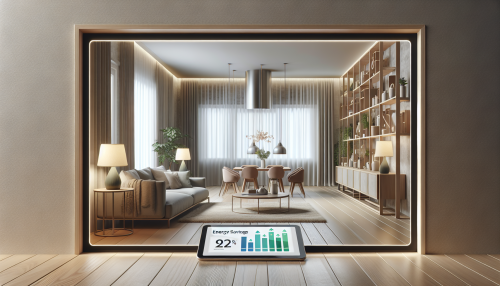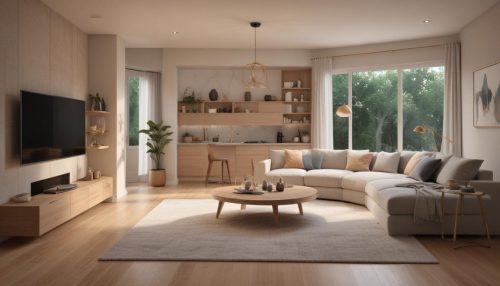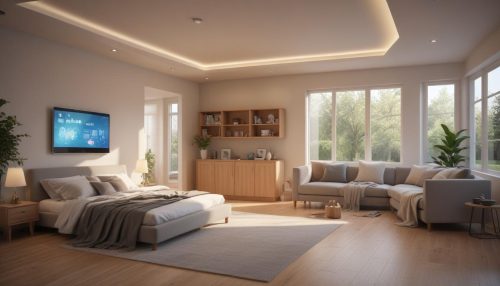Exploring Minimalist Living in Modern Homes
August 15, 2025
Minimalism has become more than just a design trend—it’s a lifestyle that embraces simplicity, functionality, and purpose. In today’s fast-paced world, where consumerism often leads to clutter and overwhelm, minimalist living offers a refreshing alternative. This approach not only transforms the way we design our living spaces but also how we approach our daily lives. We’ll explore how Minimalist Living in Modern Homes can enhance modern homes, promote mental clarity, and create a sense of peace and order.

Why Choose Minimalist Living? Minimalist Living in Modern Homes
Minimalist living is about more than just decluttering your home. It’s a mindset that focuses on keeping only what adds value and removing what doesn’t. In our consumer-driven society, we’re often surrounded by excess, and the clutter can lead to stress, distractions, and a feeling of being overwhelmed. Minimalism, on the other hand, advocates for simplicity, allowing individuals to focus on what truly matters—whether that’s family, creativity, or personal growth.
Key Benefits of Minimalist Living
- Enhanced Focus: A minimalist environment promotes mental clarity by eliminating distractions and clutter.
- Reduced Stress: Simplifying your space reduces the pressure of managing excess possessions and leads to a more peaceful home.
- Financial Freedom: By purchasing fewer unnecessary items, minimalist living helps save money and encourages intentional spending.
- Better Organization: Minimalism fosters a more organized home, making it easier to maintain cleanliness and order.
For more on the psychological benefits of minimalism, check out Psychology Today’s article on Minimalism and Well-Being.
How to Incorporate Minimalist Living in Modern Homes
1. Embrace Functional and Simple Furniture
When it comes to minimalist design, furniture plays a central role. Opting for functional, sleek, and simple furniture pieces allows your home to feel open and airy, without the clutter of unnecessary items.
- Quality Over Quantity: Choose furniture that serves a practical purpose and adds to the aesthetic of the space, rather than filling a room with excess items.
- Multifunctional Pieces: Look for furniture that serves more than one purpose, such as storage ottomans, sofa beds, or foldable tables. This will help maximize space without adding clutter.
- Neutral Colors: Neutral tones like whites, grays, and natural wood finishes create a calm, clean environment that aligns with minimalist principles.
For more on minimalist furniture ideas, read Apartment Therapy’s Guide to Minimalist Furniture.
2. Prioritize Open and Light Spaces
Minimalist homes thrive in spaces that feel open, airy, and free of unnecessary walls or barriers. Open-concept floor plans are common in minimalist design, as they allow for greater flow between rooms, making the home feel larger and more spacious.
- Maximize Natural Light: Large windows or glass doors can help bring in natural light, making the space feel more connected to the outdoors and enhancing the sense of openness.
- Keep Rooms Uncluttered: Focus on fewer, larger furniture pieces rather than filling a room with smaller items that create a crowded, busy atmosphere.
- Simplified Decor: Keep decor to a minimum. Choose statement pieces like a piece of artwork or a stylish lamp instead of filling every surface with decor items.
For more on open spaces in minimalist design, check out HGTV’s Guide to Open Concept Living.
3. Declutter and Organize with Intent
Decluttering is a key component of minimalist living. Instead of holding onto items out of habit or sentimentality, minimalist living encourages you to be intentional about what you keep in your home.
- Purge Unnecessary Items: Regularly go through your belongings and remove things that no longer serve a purpose or bring you joy.
- Smart Storage Solutions: Invest in storage options that help keep items organized and out of sight, such as built-in shelves or storage bins that blend seamlessly into the design.
- Mindful Consumption: Adopt a mindful approach to purchasing new items, only acquiring things that are truly necessary or meaningful.
For more on decluttering tips, read The Spruce’s Decluttering and Organizing Guide.
4. Incorporate Natural Elements
A minimalist home often incorporates natural materials and elements that enhance the simplicity of the design. Natural textures, like wood, stone, and plants, add warmth and depth to a minimalist space, making it feel more inviting and grounded.
- Wooden Furniture and Accents: Choose furniture and decor made from natural wood, which adds texture and warmth to a space while maintaining simplicity.
- Indoor Plants: Adding greenery not only brings life to the home but also contributes to improved air quality and a sense of calm.
- Stone or Marble Features: Incorporating natural stone or marble elements, such as countertops or accent walls, adds elegance without overwhelming the space.
For more on incorporating natural elements into minimalist design, check out Elle Decor’s Guide to Natural Materials.
5. Use a Neutral and Monochromatic Color Palette
Minimalism is often associated with a neutral color palette, which helps create a calm, clean aesthetic. While neutral tones are key, it’s important to add subtle layers of texture and contrast to prevent the space from feeling cold or lifeless.
- Monochromatic Schemes: Using varying shades of a single color, such as grays or whites, creates a serene and unified atmosphere.
- Pop of Color: Incorporate one or two accent colors through decor items or artwork to add personality and warmth.
- Consistency Across Spaces: Maintain a consistent color palette throughout the home for a cohesive and balanced feel.
For more on color palettes in minimalist design, check out House Beautiful’s Guide to Minimalist Color Schemes.
6. Focus on Functionality Over Aesthetics
Minimalism is not about creating a sterile, lifeless environment—it’s about prioritizing functionality and purpose. Each piece in a minimalist home should serve a clear function and add value to the space.
- Keep Only What You Need: Before purchasing new items or adding decor, consider how it will contribute to your lifestyle and whether it serves a practical purpose.
- Mindful Decor: Choose decor pieces that are both functional and beautiful, such as minimalist artwork, elegant lamps, or sleek shelving units.
For more on functional minimalist design, read Dwell’s Guide to Minimalist Design Principles.
Conclusion: Embracing Minimalism in Modern Homes
Minimalist living doesn’t mean sacrificing style or comfort—it’s about designing a space that is both functional and aesthetically pleasing, with a focus on simplicity and intentionality. By decluttering, choosing neutral colors, and incorporating natural elements, you can create a home that reflects your values, enhances your well-being, and promotes mental clarity. Embrace minimalist living to transform your space into a peaceful, purposeful retreat that supports your modern lifestyle.
References:
- Apartment Therapy. (2021). Minimalist Furniture Ideas for Your Home. Retrieved from https://www.apartmenttherapy.com/
- HGTV. (2021). Open Concept Living for Minimalist Homes. Retrieved from https://www.hgtv.com/
- The Spruce. (2021). Decluttering Tips for a Minimalist Home. Retrieved from https://www.thespruce.com/
- Elle Decor. (2021). Natural Materials in Minimalist Design. Retrieved from https://www.elledecor.com/





